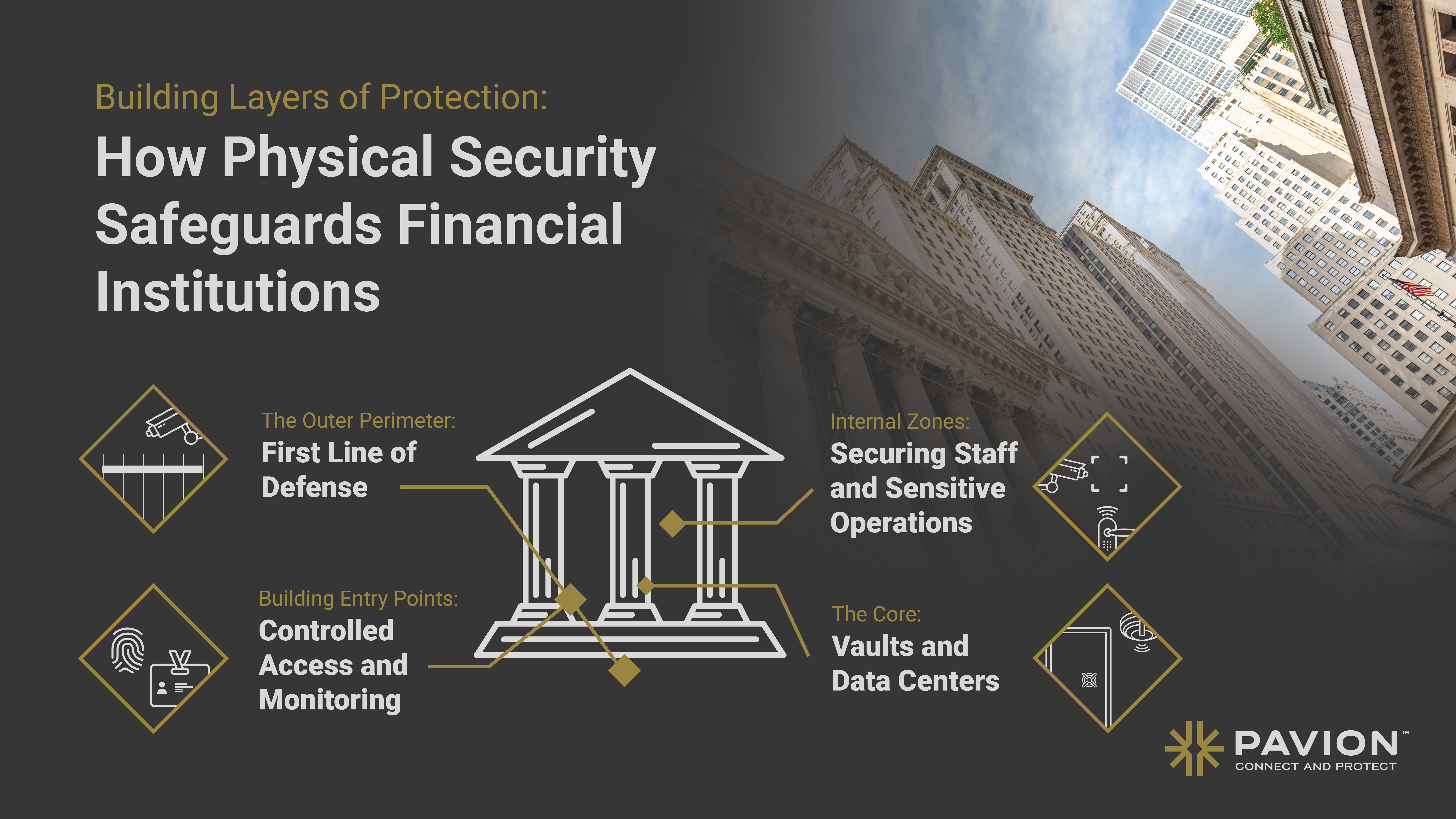
Building Layers of Protection: How Physical Security Safeguards Financial Institutions
Financial institutions have long been prime targets for criminals—from opportunistic thieves to sophisticated organized groups. While today’s headlines often focus on cyber threats, the need for robust physical security is just as critical. In fact, the most effective security strategies for banks, credit unions, investment houses, and insurance companies build on a time-tested principle: layered security.
Much like cybersecurity frameworks that protect networks from the outside in, physical security in financial environments is designed with concentric rings of protection. Each layer—starting from the perimeter and moving inward—serves to deter, detect, delay, and respond to potential threats, ultimately protecting the most valuable assets at the core.
Let’s explore how these security layers work together to safeguard financial operations, employees, and customers.
The Outer Perimeter: First Line of Defense
The security journey starts well before someone walks through the door. The outer perimeter typically includes:
- Fencing and barriers that control vehicle and pedestrian access.
- Security lighting that deters after-hours intrusion and improves visibility.
- Surveillance cameras covering building exteriors, parking lots, and entry points to monitor suspicious activity 24/7.
- Access control for parking areas, ensuring only authorized vehicles and individuals enter the property.
This first layer’s goal is simple: deter criminals before they approach the facility.
Building Entry Points: Controlled Access and Monitoring
Once at the building’s doors, physical security becomes more concentrated. Financial institutions employ:
- Card readers, keypads, or biometric access controls to limit who can enter staff-only areas.
- Mantraps or secured vestibules, especially at high-risk branches, to prevent tailgating or forceful entry.
- Visible cameras and panic buttons to reassure staff and deter aggressive actions.
This layer not only restricts unauthorized access but also ensures there is a record of who comes in and out.
Internal Zones: Securing Staff and Sensitive Operations
Deeper inside the building, security becomes even tighter. Financial institutions typically divide internal areas into security zones based on risk. Examples include:
- Secure teller lines and transaction counters with protective glass and controlled cash drawers.
- Access-controlled doors leading to back-office operations like vault rooms, server closets, or executive offices.
- Motion detection and internal surveillance systems to monitor after-hours activity or unauthorized movement.
The purpose here is twofold: protect employees and customers in public areas while safeguarding sensitive operations from internal or external threats.
The Core: Vaults and Data Centers
At the very center lie the most critical assets—cash, important documents, and increasingly, physical servers that support digital transactions. These are protected by:
- Vaults with time locks and seismic sensors, designed to resist burglary attempts.
- High-security cages or server rooms with multiple access authentication requirements.
- Environmental monitoring systems to detect fires, flooding, or temperature anomalies.
This final layer is the last stand in a series of defenses, ensuring that even if outer layers are compromised, critical assets remain secure.
Why Layered Physical Security Matters in Finance
Much like cybersecurity firewalls, encryption, and multi-factor authentication work together to protect data, layered physical security ensures no single point of failure can compromise an institution. Benefits include:
✅ Reduced risk of theft and fraud: Multiple hurdles discourage would-be criminals.
✅ Improved employee and customer safety: Staff are trained to recognize and respond to threats with panic systems and clear procedures.
✅ Regulatory compliance: Financial institutions face strict rules about protecting both physical and digital assets—layered security helps meet these requirements.
✅ Preservation of trust: Customers want to know their money—and their personal visits—are secure.
Pavion’s Approach to Financial Institution Security
At Pavion, we design, install, and maintain integrated physical security solutions that protect financial institutions at every level. From perimeter video surveillance and intrusion detection to advanced access control and vault monitoring systems, we help you build a multi-layered strategy that safeguards your people, facilities, and reputation.
Whether you operate a single branch or manage a multi-site network, we tailor our solutions to your specific risks and regulatory needs—helping you achieve the strongest possible defense.
Ready to enhance the physical security of your financial institution?
Connect with Pavion today to learn how we can help you build the layers of protection that keep your operations and customers secure.


